There are dragons hidden here in one river, two streams, three mountains and four streets-Ciqikou
(During the Anti-Japanese War, Lin Sen lamented the prosperity of Ciqikou and wrote an inscription for it "Little Chongqing")
1. Mountains are made of water, so beautiful
Take a closer look at the ancient town of Ciqikou, which is bounded by Zhongliang Mountain in the west and faces the Jialing River in the east. It is located between the Cai family and the two major peninsulas in Yuzhong, and is at the top of Chongqing's largest Jiangbei Peninsula.
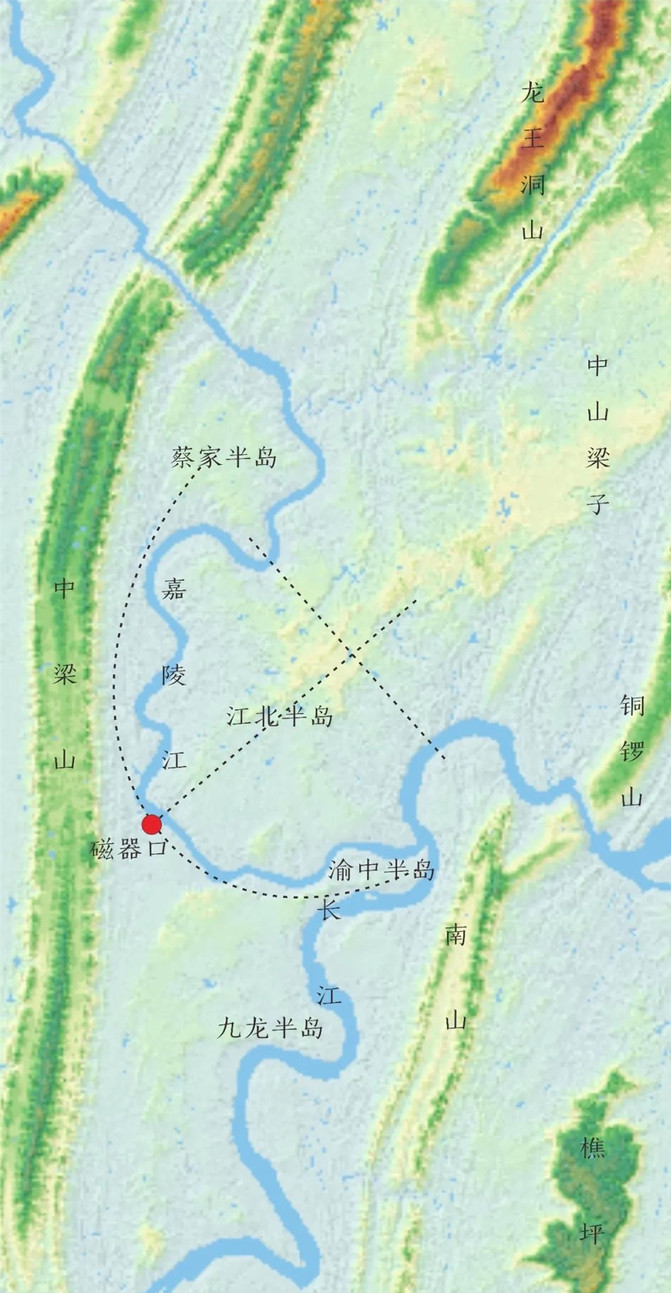
(The landscape situation of Ciqikou in Chongqing's Urban area)
Look at the landscape layout of the ancient town: the Zhongliang Mountains extend eastward in the present Shapingba section. The southern branch is the vein of ancient Chongqing City. It is divided into the Erlangguan area of Cave Cave, passing through Pingding Mountain and Eling to the line of Daliangzi, and is adjacent to the Jialing and Yangtze River to create a two-thousand-year historical pattern of the mother city of Yuzhong; the northern branch is the vein of Ciqikou. It is divided into the peak of Gele Mountain and rises to the left and right sides of Ma 'anshan and is surrounded by Fenghuang and Qingshui Rivers, which leads to the thousand-year prosperity of Ciqikou; Therefore, Ciqikou and ancient Chongqing City are of the same origin, dating back to Qinba and Kunlun, and located near the Gele and Zhongliang Mountains. Finally, it was surrounded by the Liangqu River to form a peninsula. It's just that one is a big situation and the other is a small fortune. In this sense, Ciqikou is also a "little Chongqing" geographically.
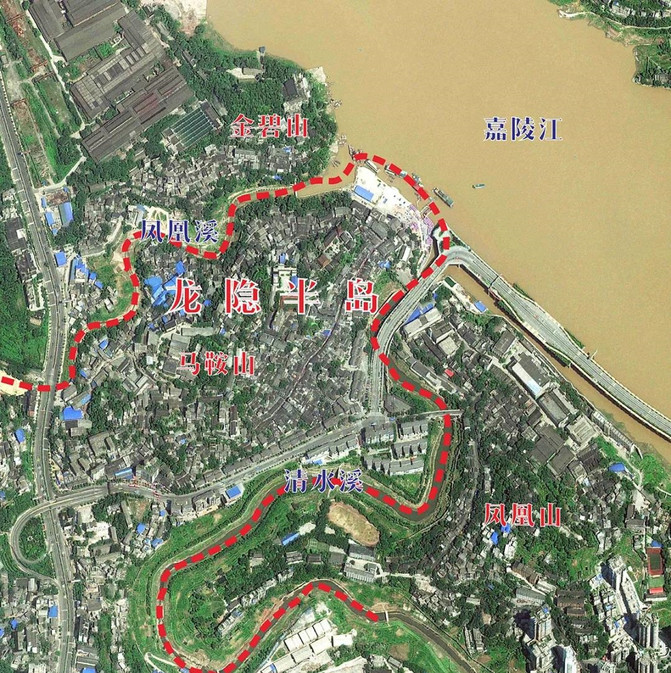
(Longyin Mountain in Ciqikou is wound into a natural peninsula by a river and two streams)
2. Music is spiritual, and mountains are hidden into towns
Like the old city of Chongqing, Ciqikou is built on a mountain. It is also a typical mountain city that originates from the three veins of Jinbi, Ma 'an and Phoenix in Geleshan. It is arranged along the river in a "pin" shape from north to south and each leads east into the river.
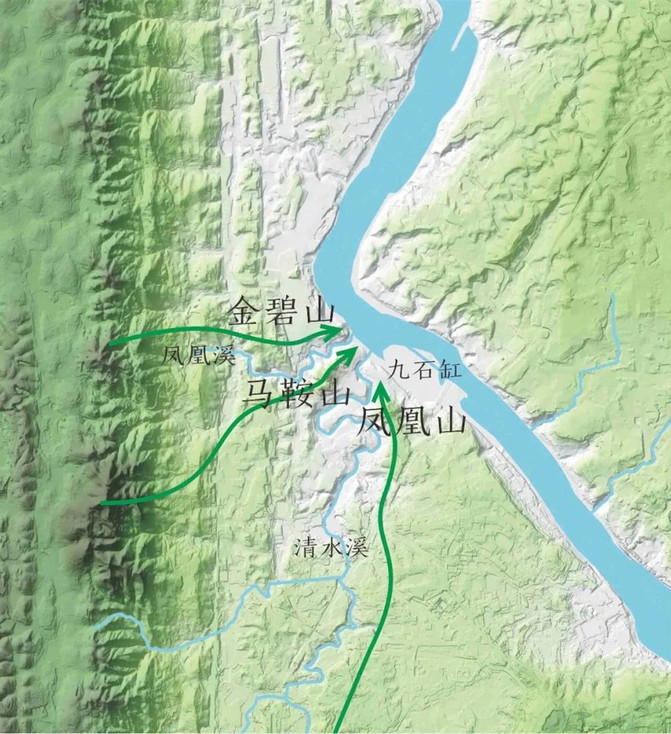
(Three Mountains and Two Streams at Ciqikou enter Jialing in the east)
Ma 'anshan in the middle flows down from Geyue to this point and enters the river. It is shaped like a dragon's head, so it is also called Longyin Mountain Ciqikou and also called Longyin (Ciqikou has historically been called Longyin Field, Longyin Town, Longyin Township, etc.). In modern times, the name Longyin is widely rumored to be named after Emperor Jianwen of the Ming Dynasty once wandered into Baolun Temple in Ciqikou to take refuge.) The ancient town of Ciqikou was built in this mountain surrounded by water.
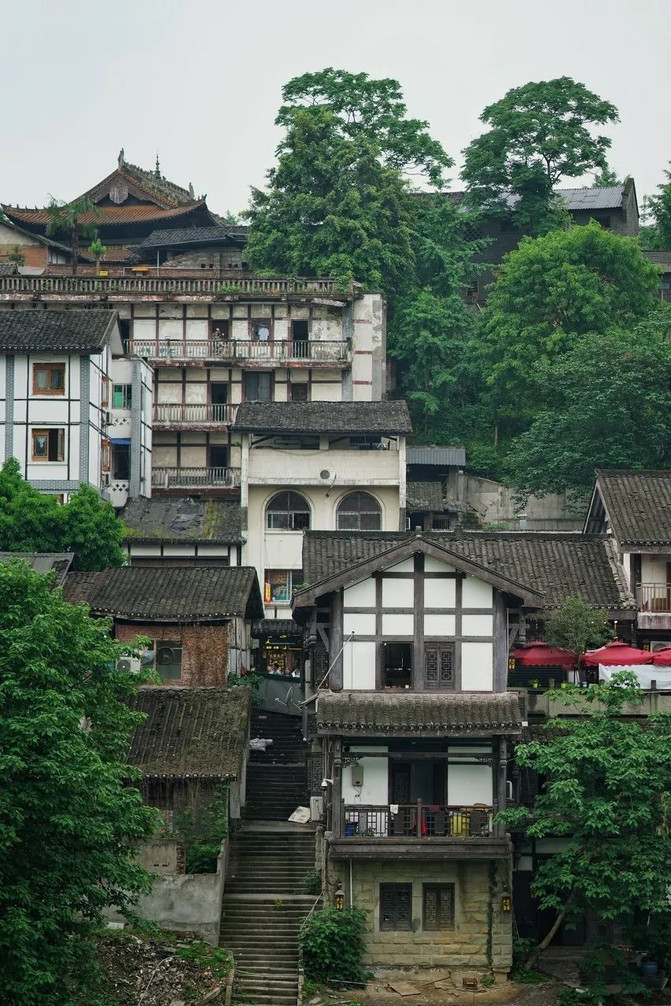
(The terraces in the ancient town and the buildings built against the mountains with clear levels of high and low levels)
Strolling through it, whether it is from the river bank dock to the terraces of the ancient town, the old streets that turn with the ups and downs of the mountains or the hanging buildings built along the mountains and rivers, it always reveals its mountain city temperament.
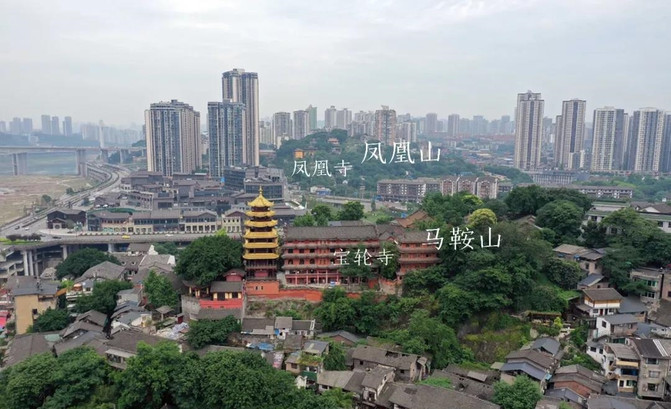
Looking out of the ancient town from Shunshui Temple on the other side of Jialing, there are blue tiles and white walls in the two streams and three mountains between the mountains and rivers. The scenery of the mountains and rivers is like the mother city of Nanshan Temple and Yuzhong Mountain, and the impression of Yuzhong Mountain City in the north of the Yangtze River is unforgettable.
3. Jialing winds and the water returns to the city
Ciqikou is a "city" due to water and is also an authentic river city. Ciqikou is a witness and beneficiary of the prosperity of the Jialing River in the water transportation era. The close proximity of the Jialing River has a lasting impact on the ancient town. The nine-thousand-mile Jialing River meandered here and is blocked by the Jiushigang River Beach at the foot of Fenghuang Mountain. As well as the continuous support of the Qingshui River entering the river, a huge backwater bay has been formed under Ma 'anshan, making Ciqikou a natural deep-water port.
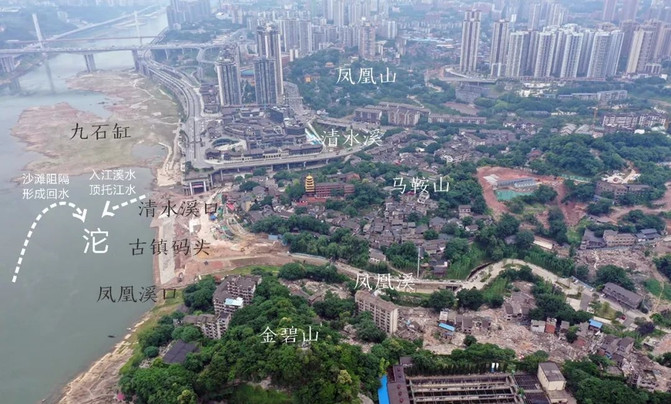
At that time, the mouth of the magnetic appliance can be traced back to the Baishui River in Shaanxi Province to communicate with Qin, Long, Shaanxi and Gansu Province. In the next thirty miles, the Yangtze River flows eastward out of the Three Gorges and connects to the Yangtze River and reaches the sea. Local products and groceries from the north and south are distributed and transferred here, and it is the largest commercial center in the upper reaches of Chongqing City.
4. History of the ancient town, millennium development
Ciqikou was once named Baiya and Longyin. Its clear records can be traced back to the Northern Song Dynasty. Since then, its name has changed several times in successive dynasties. The evolution history of the name of Ciqikou is a thousand-year development history of Ciqikou.
Baiya is the oldest known name at Ciqikou. It first appeared in the "Epitaph of Fei Jun of Chaosan Lang" written by Lu Tao, a native of Shu in the Northern Song Dynasty. The "Yudi Jisheng" of the Southern Song Dynasty recorded more details on the "White Cliff". Thirty miles north of the (Chongqing) Prefecture, there are Baiya Mountain and Baiya City, Baiya Temple and Baiya God Tomb."This kind of national geographical record shows the importance of Baiya at that time.
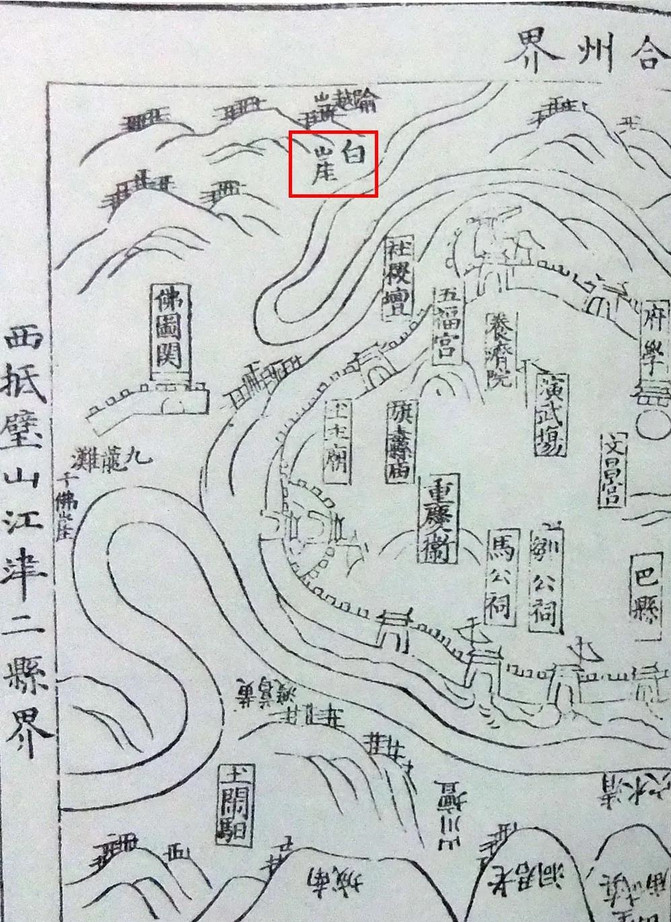
In the Ming Dynasty,"Baiya Township" and "Baiya Town" appeared at the same time in Wanli's "Chongqing Prefecture Annals", such as "Baiya Township has Shaping, Baolun Erli","Zhenfan Shi... Baiya Town, 30 Miles West." During the Ming and Qing Dynasties, Baiya was always one of the few "towns" in Ba County, and firmly occupied the center of the Xicheng City. Its status can be called the "First Meeting of Xili".
In the middle of the Qing Dynasty, the name was still widely used in Baiya, while the names Longyin, Ciqi and Ciqikou appeared almost simultaneously. In the forty-second year of Qianlong, the Chongqing government office clearly mentioned Ciqi Town in the form of an official document for the first time in a notice; and in the two files of "Baxian Archives", both in the fifth year of Jiaqing,"Longyin Town" and "Ciqi Town" were mentioned respectively and became names shared by officials and people together with Baiya and Baiyan. Among them, Longyin Town was named after Longyin Mountain, Ciqi Town, and Ciqikou was named after porcelain trade.
Among the many place names in Chongqing,"kou" mostly refers to ports and docks, which is also an expression of "mouth-like" landforms where rivers and streams enter rivers. For example, Ciqikou is the port for transporting and selling porcelain (ancient "porcelain" was connected to "magnet", and there was also Ciqi Street in ancient Chongqing City) is also the entrance of Qingshui River and Fenghuang River into the river. Compared with Longyin and Ciqi,"Ciqikou" is more and more widely used because it is more in line with the habits of Chongqing dialect, is easy to remember, recite, and is easy to spread. It became mainstream in the early years of the Republic of China, and after the founding of the People's Republic of China, it officially became the proper name of a first-level administrative unit and has been used to this day.
5. Centenary sand magnetism, the backbone of China
Entering the 20th century, Ciqikou continued to maintain its status as the "Xili First Conference" in the fields of transportation, industry, commerce, politics, culture and other fields, and gradually became the birthplace of modern industry in the west of Chongqing.
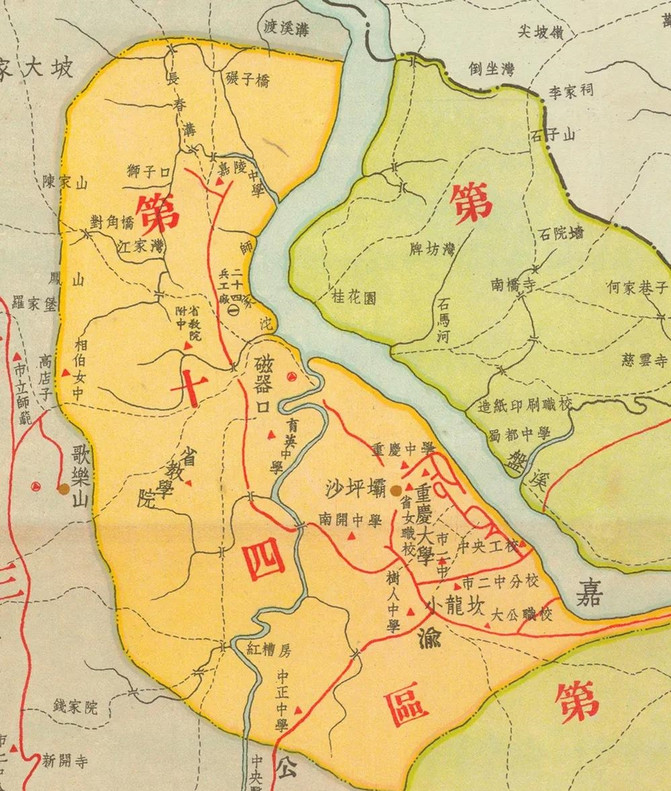
It began with the establishment of Hengyuan Silk Factory in Ciqikou by Zhang Mingjin, a native of Hechuan in 1909; by 1925, Ciqikou had more than 1700 silk reeling machines in four silk factories, including Huakang, Tianfu, Qian Jixiang, and Tongfu, with nearly 3000 workers. The raw silk output accounted for half of Sichuan's total and became an important silk town; the silk industry has also become another important industry in Ciqikou after the porcelain industry.
In 1934, Liu Xiang, chairman of Sichuan Province, established a power steel plant upstream of Ciqikou and realized power generation and steel making in early 1937. By the eve of the Anti-Japanese War, various industrial systems such as silk reeling, smelting, brewing, and porcelain were initially established at Ciqikou. After the beginning of the Anti-Japanese War, as a large number of factories, institutions and personnel in the east moved inward to the Ciqikou and Shapingba areas, it became the main cultural and educational center in the rear area of the Anti-Japanese War. With the goal of resisting Japan and national salvation, all sectors of society are vigorously developing various undertakings such as social movements, cultural education, science and technology teaching, people's livelihood sports, and urban and rural development in this region, laying the foundation for industry, culture and education in Shapingba and even Chongqing today.
6. Hustle and bustle, Yanhuo Ancient Town
By 2000, marked by the municipal government's approval and approval of the "Protection Planning and Design of Ciqikou Historical and Cultural District", Ciqikou began to implement protective development and entered a new era of development.
Today's Ciqikou is not only a famous historical and cultural street in China, a national 4A-level tourist attraction, but also a master of Chongqing's ancient town tours, urban tours, and landscape tours. It is also well-known across the country and the world as a city's cultural business card and tourist landmark. In the eyes of many foreign tourists, the "Little Chongqing" Ciqikou is almost a must-have attraction when visiting Chongqing.
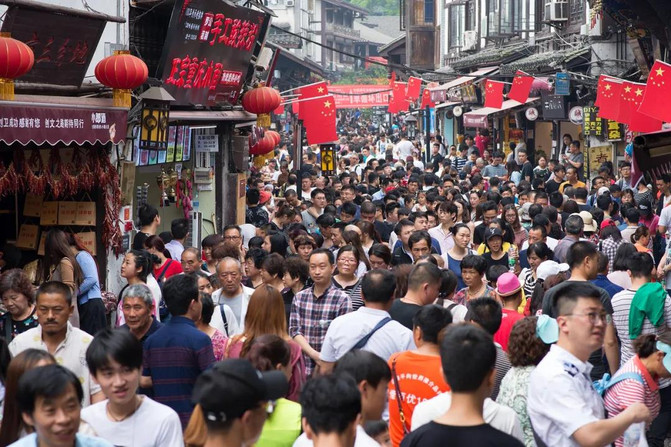
Today, Ciqikou is still bustling. The ancient town is still crowded with people and shops. However, tourists from all over the world have become the new protagonists. The old stone street at the foot of the villagers in the past has become a "sky street" for tourists to stroll through.
7. Millennium Ciqikou, the ancient town of Chenmahua
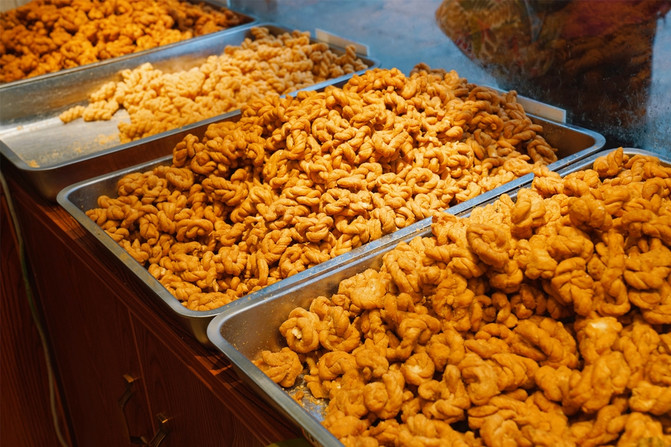
In addition to visiting the scenery of the ancient town, there are also a wide range of Chongqing specialties in the ancient town that people can buy from the streets. As well as a variety of delicious and tempting traditional snacks, you can eat from day to night. In the ancient town, you can enjoy the customs and delicacy of Chongqing.
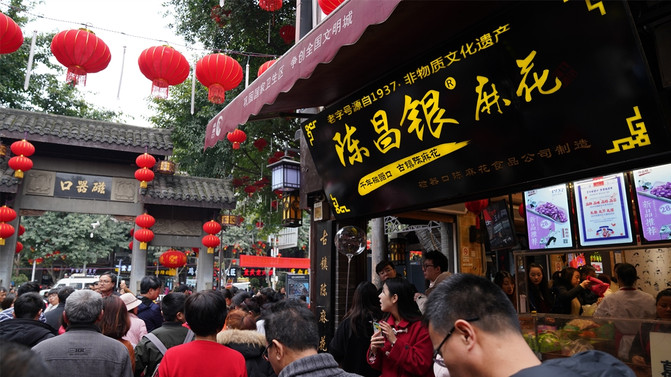
When it comes to magnetic mouth, I have to mention Chen Mahua, who is highly related to magnetic mouth. Ciqikou Chen Mahua and Chen Mahua refer to "Chen Chang Silver Mahua", which first started in 1907 and is now a time-honored brand in Chongqing. Chen Mahua's making skills are an intangible cultural heritage of Chongqing City. The "hand-made, less oily but not greasy, fresh and crispy, and melted into dregs" Chen Mahua has left a deep impression on countless tourists and has become a business card of Chongqing. Coming to the ancient town to check in and taste Chen Mahua has become a must-do for tourists traveling to and from Ciqikou.
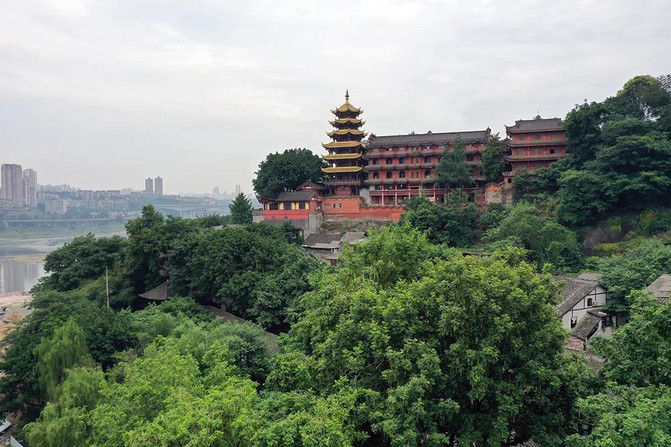
Unlike many popular Internet celebrity attractions, Ciqikou still adheres to its tradition and original intention while reshaping its prosperity. Here, Diaojiao Tower, Shiban Road, Huangjue Tree, Old Tea House... A large number of indigenous houses have been preserved, and the strong nostalgia and folk customs have been continued. This is a window through which the world can understand old Chongqing. It is a pure land in the downtown area that protects nostalgia.
Previous Article:Before the summer break in 2020, go to a date in the mountain city
Next Article:Where to find the mountains and rivers, beautiful mountains and rivers, beautiful hearts and rivers
